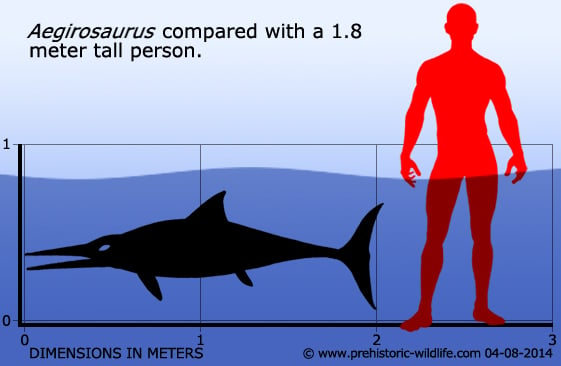In Depth
Originally named as a species of Icthyosaurus by Wagner in 1853, Aegirosaurus was raised as a distinct genus by Bardet & Fernandez some one hundred and forty-seven years later. This is in part down to the wastebasket taxon effect, a common practice in the nineteenth century that saw similar prehistoric animals grouped together as a single genus on the basis of superficial similarity. New study has revealed Aegirosaurus to belong to the Platypterygiinae group of ichthyosaurs (named after Platypterygius) and a sub group within the Ophthalmosauridae (after Ophthalmosaurus). Before being declared a distinct genus, remains have also been attributed as Ichthyosaurus trigonus posthumus.
Aegirosaurus is named after the sea god Aegir who in Norse Mythology is famed for his brewing skill, something that regularly saw him providing the drink for feasts for the gods of Asgard.
Further Reading
– A new ichthyosaur from the Upper Jurassic lithographic limestones of Bavaria. – Journal of Paleontology 74(3):503-511. – N. Bardet & M. Fernandez – 2000.










